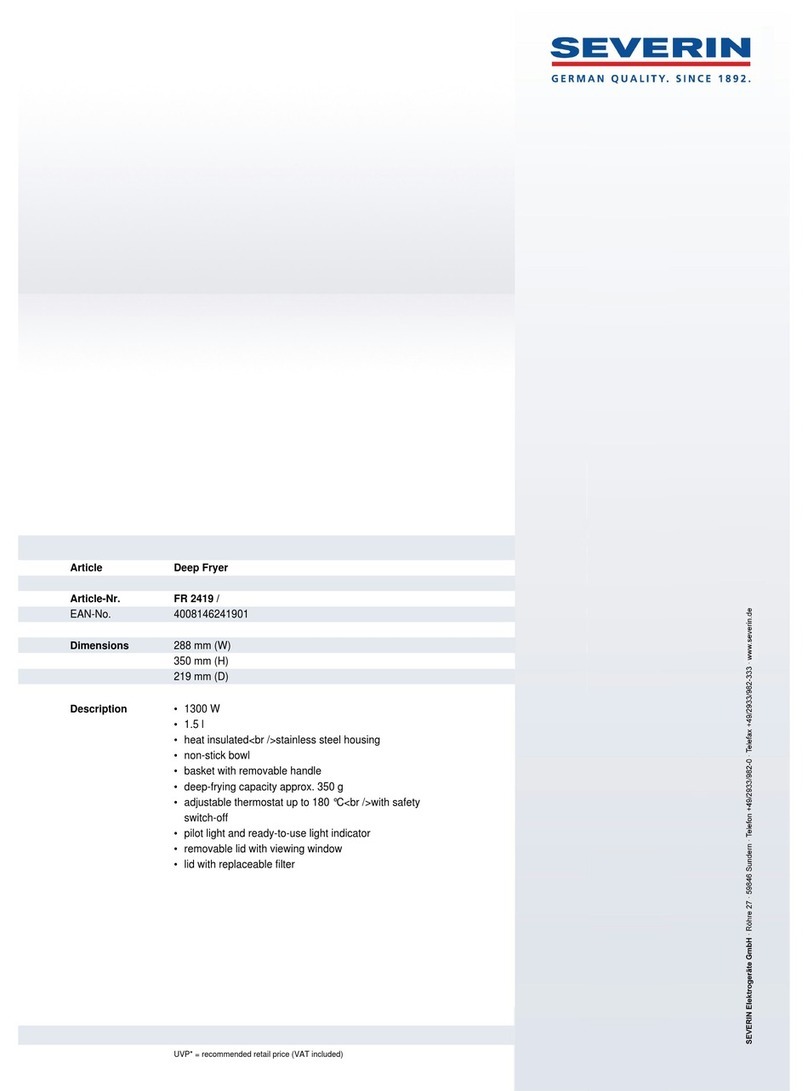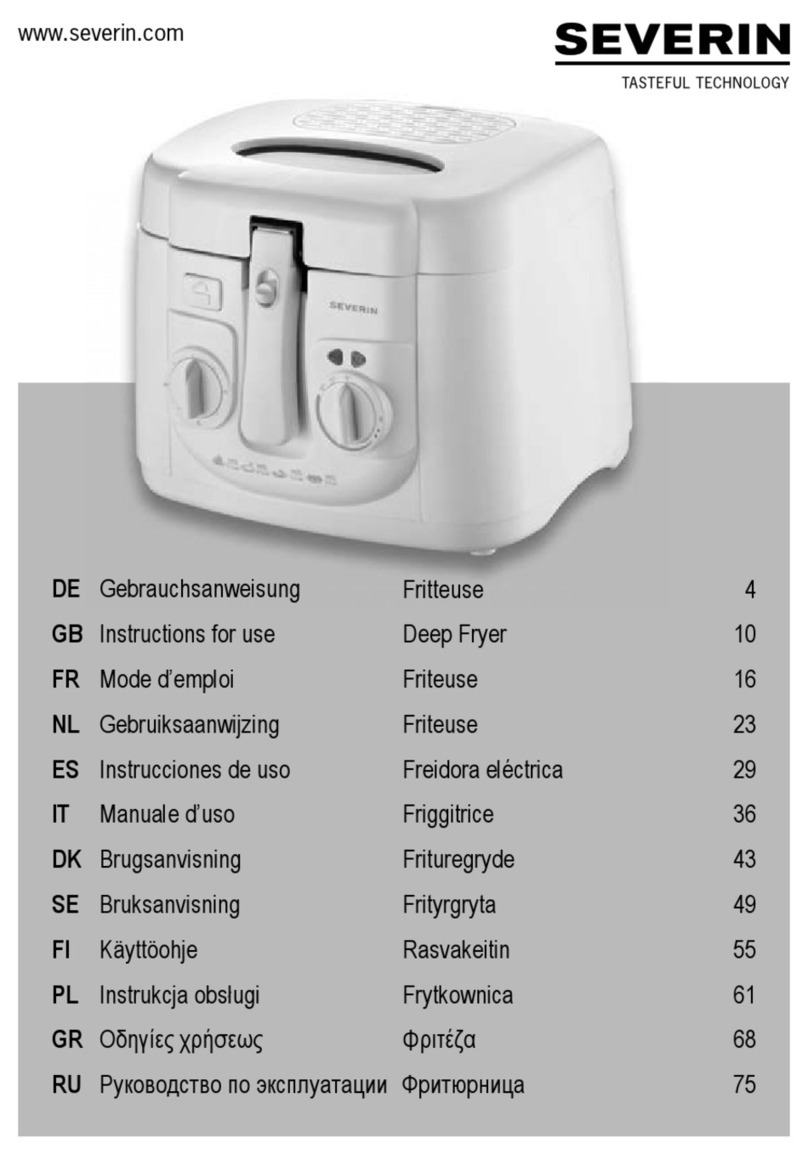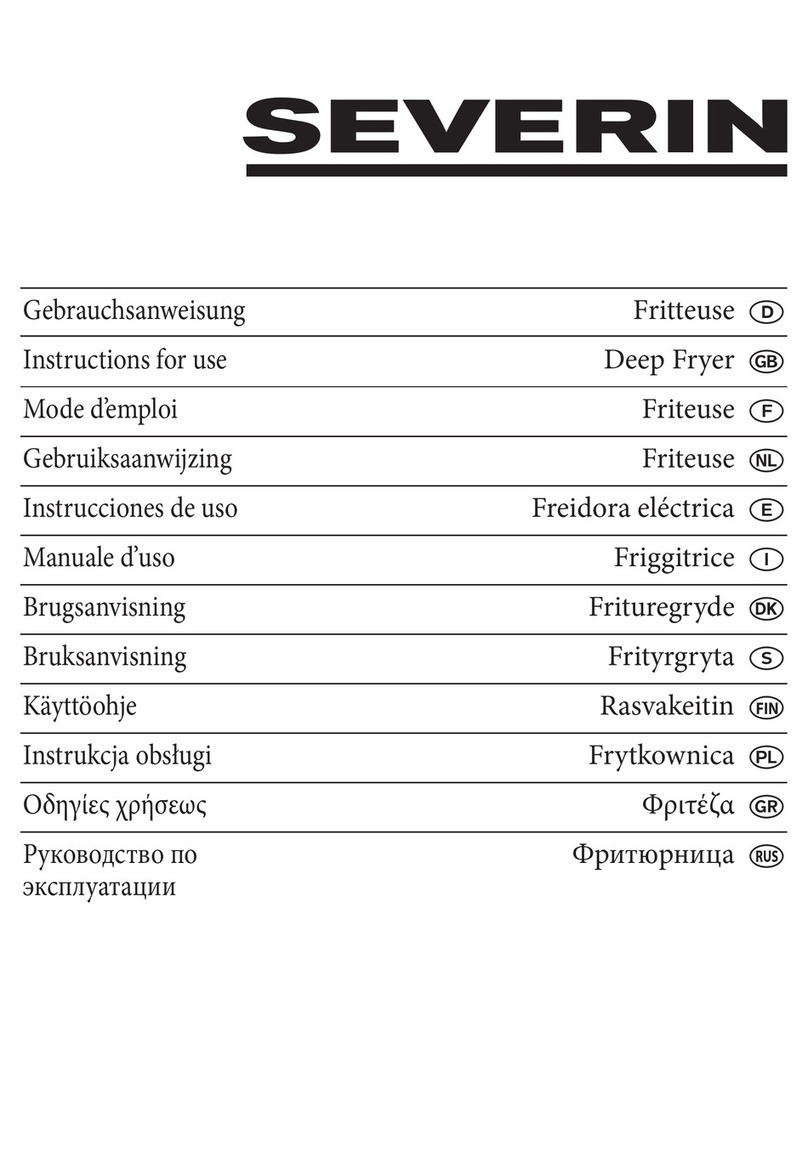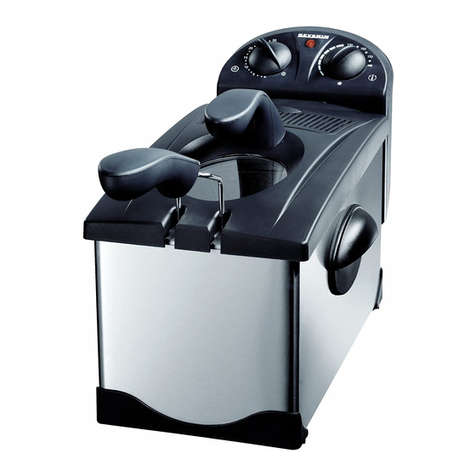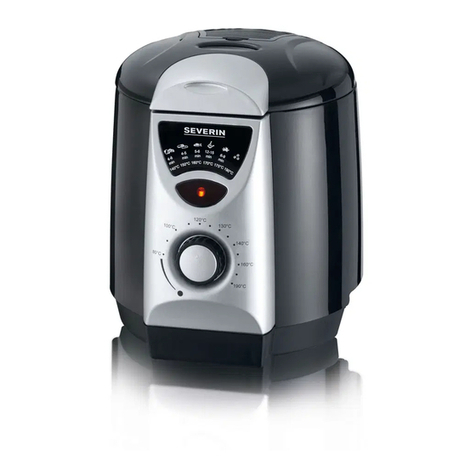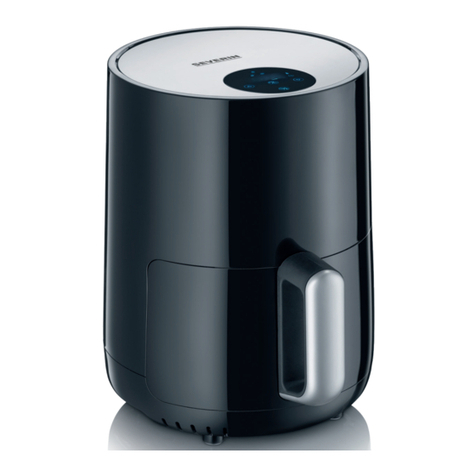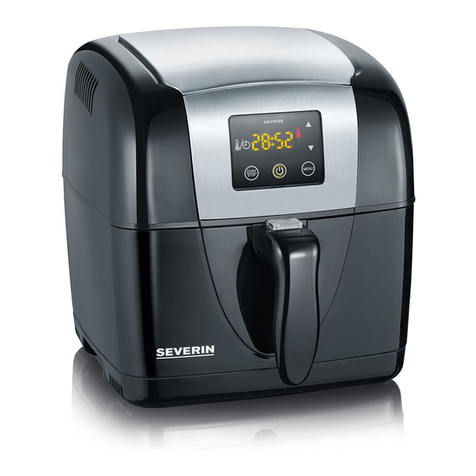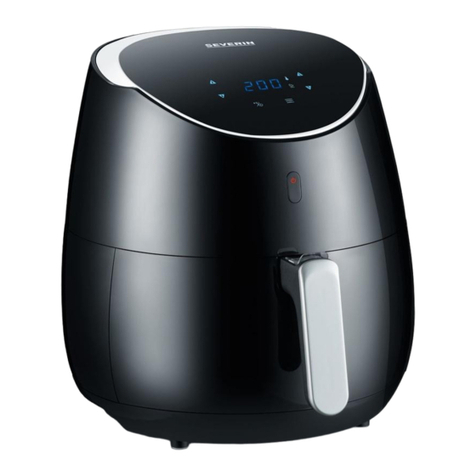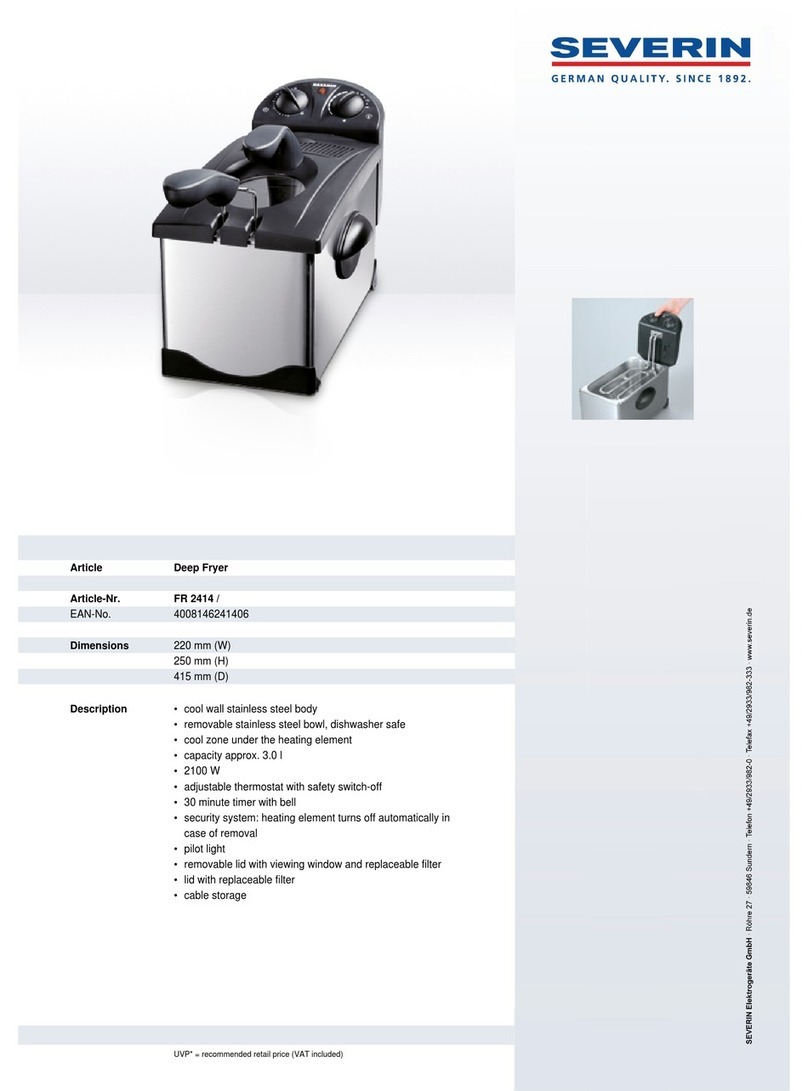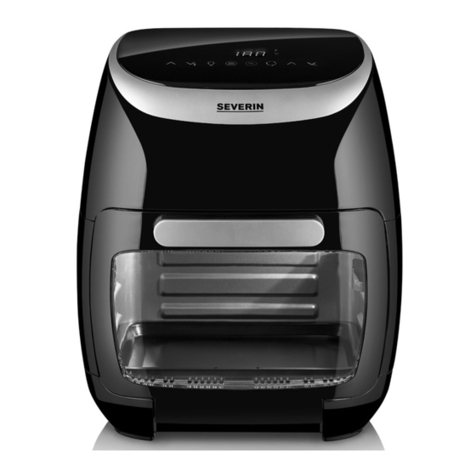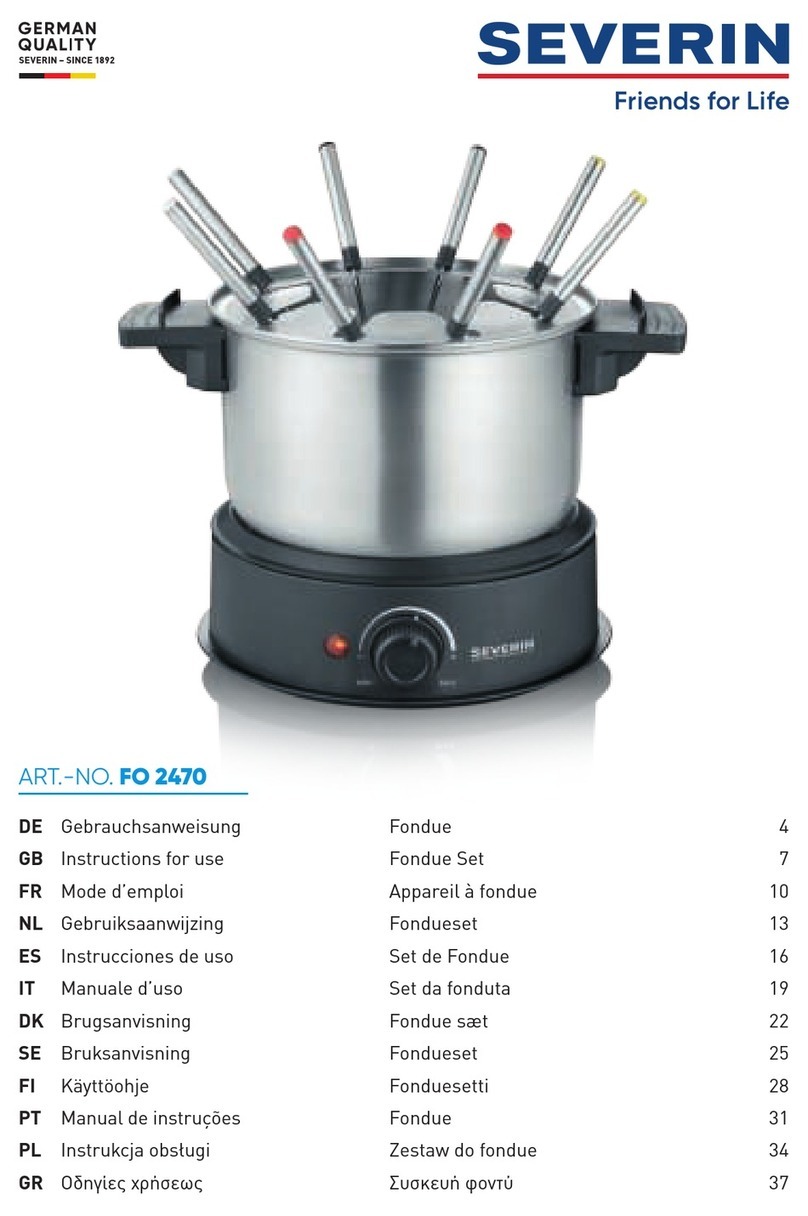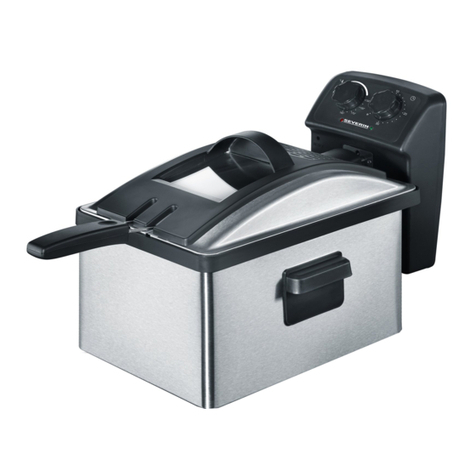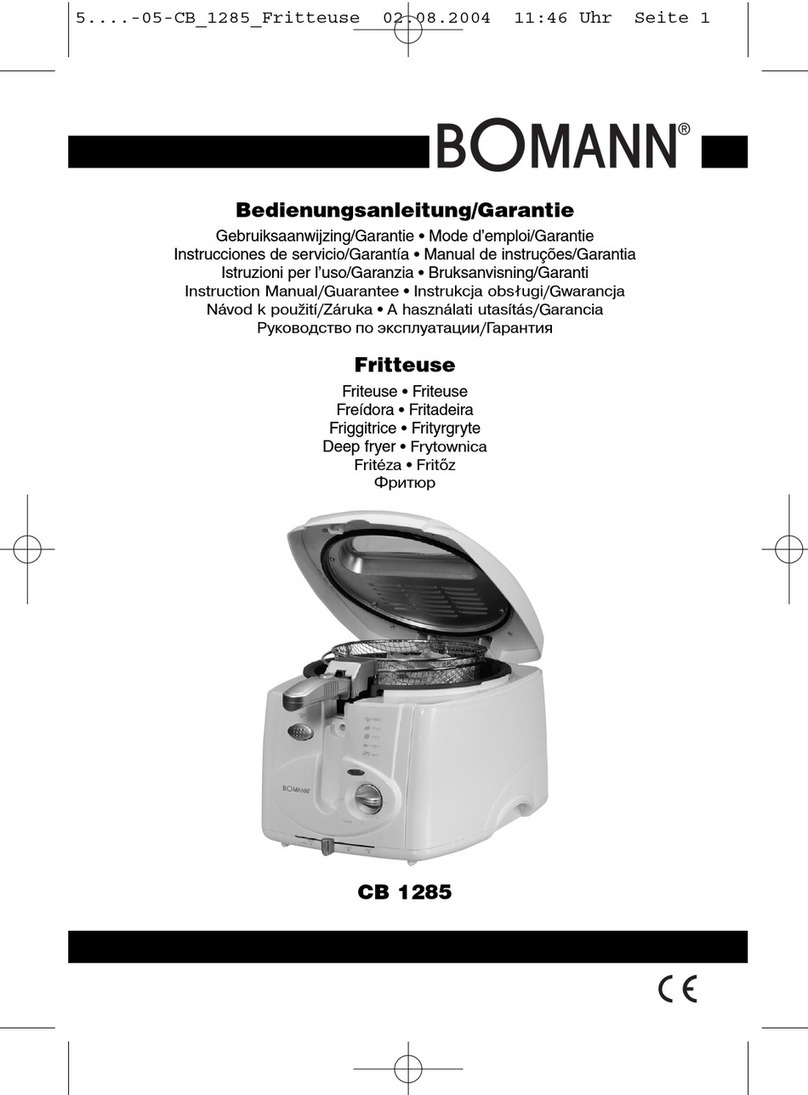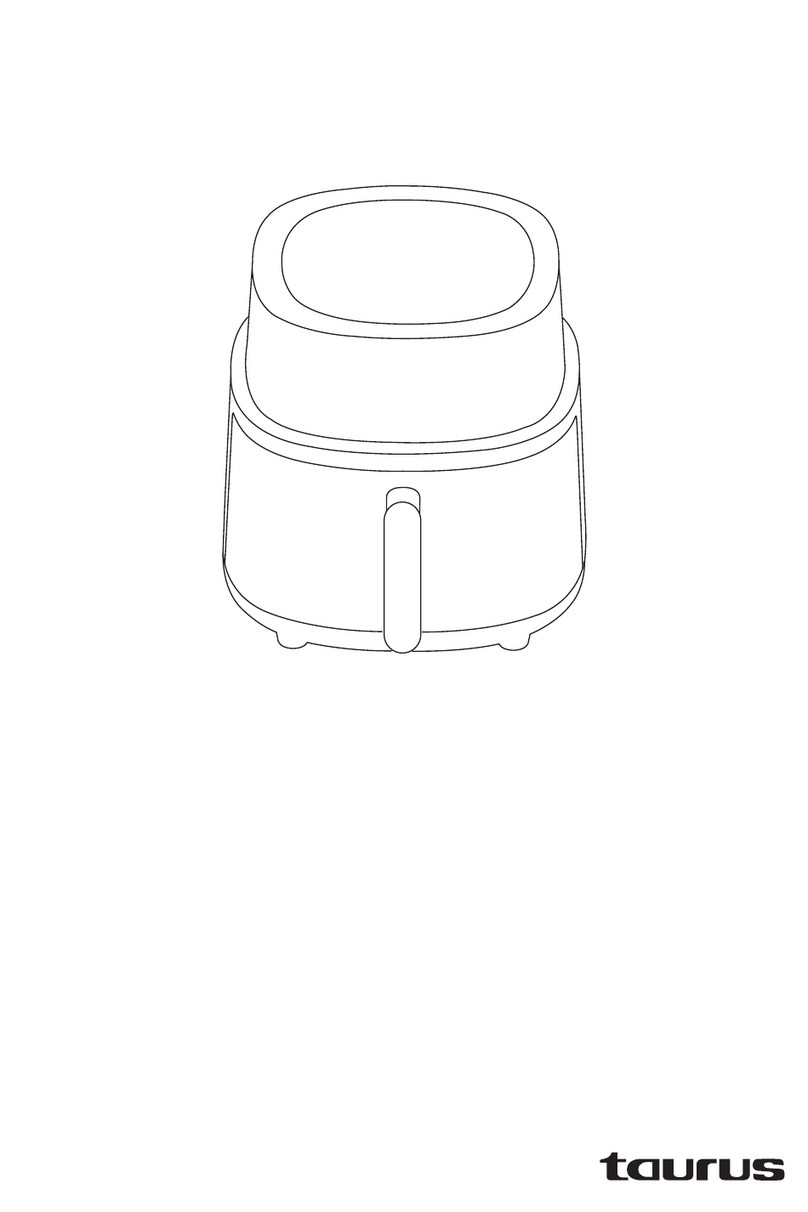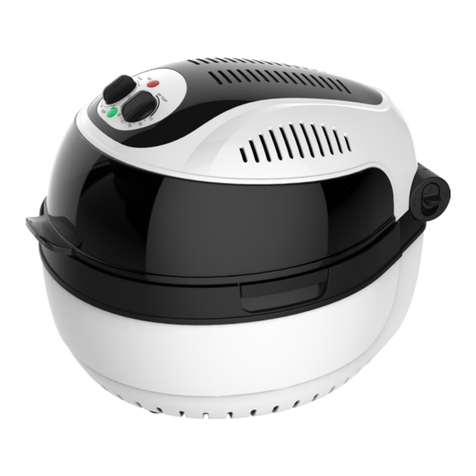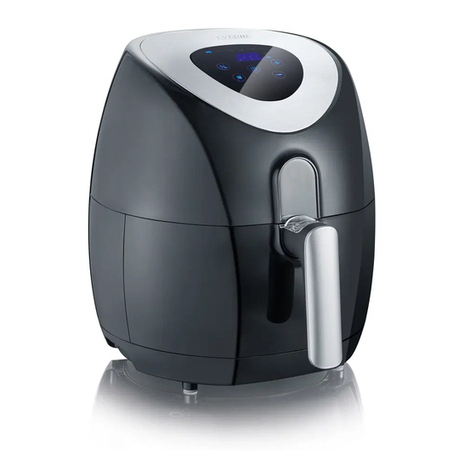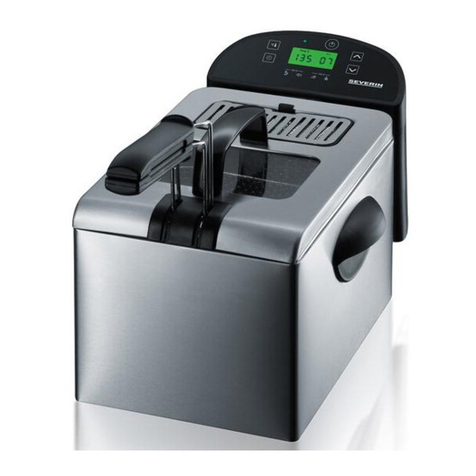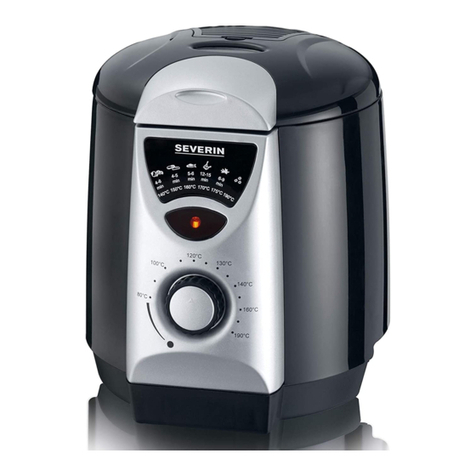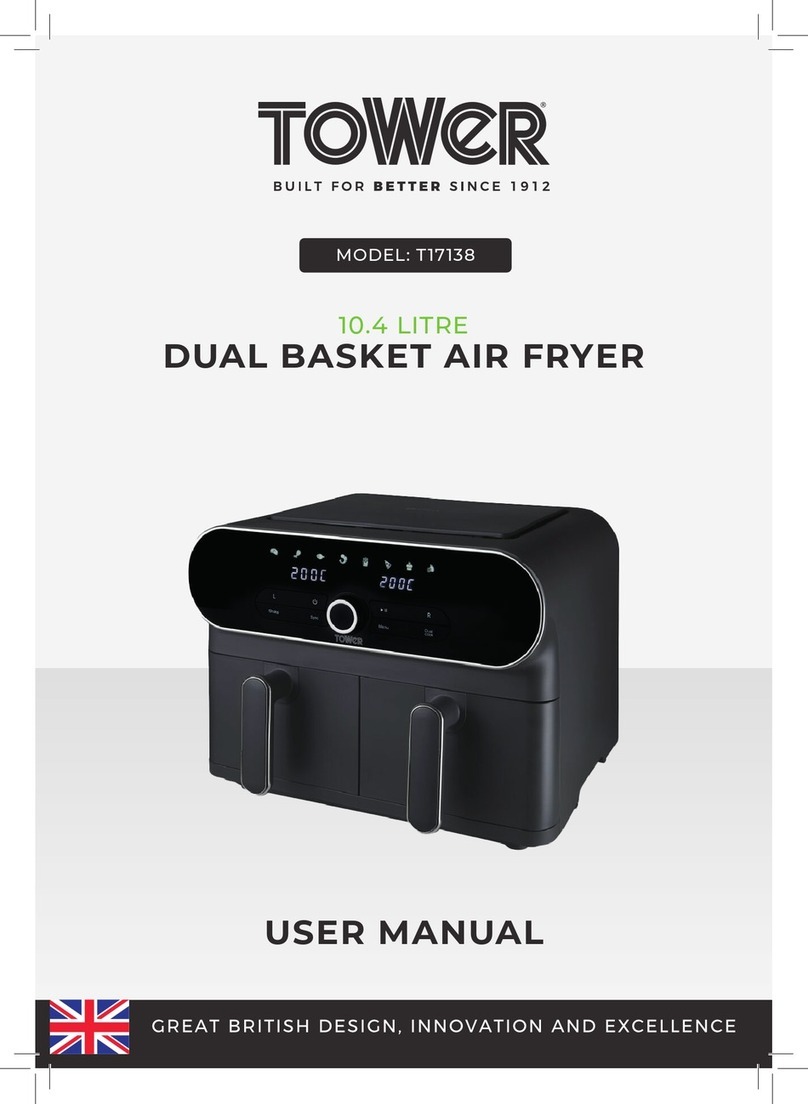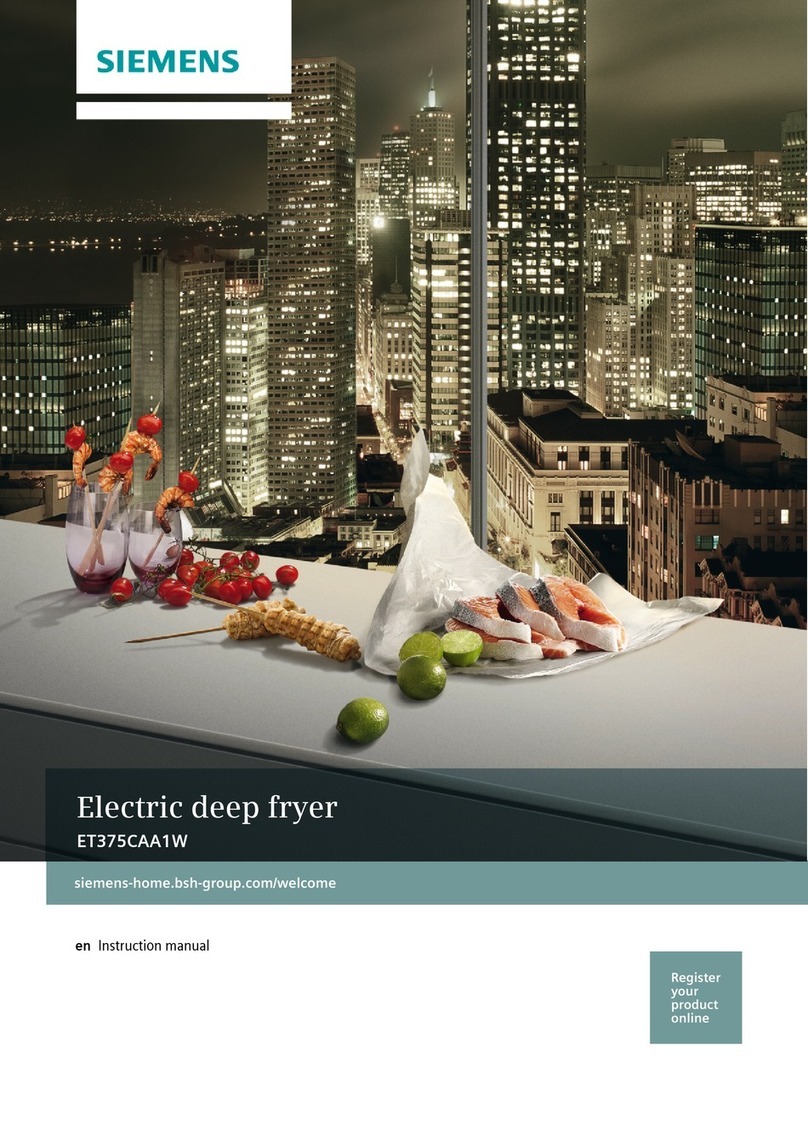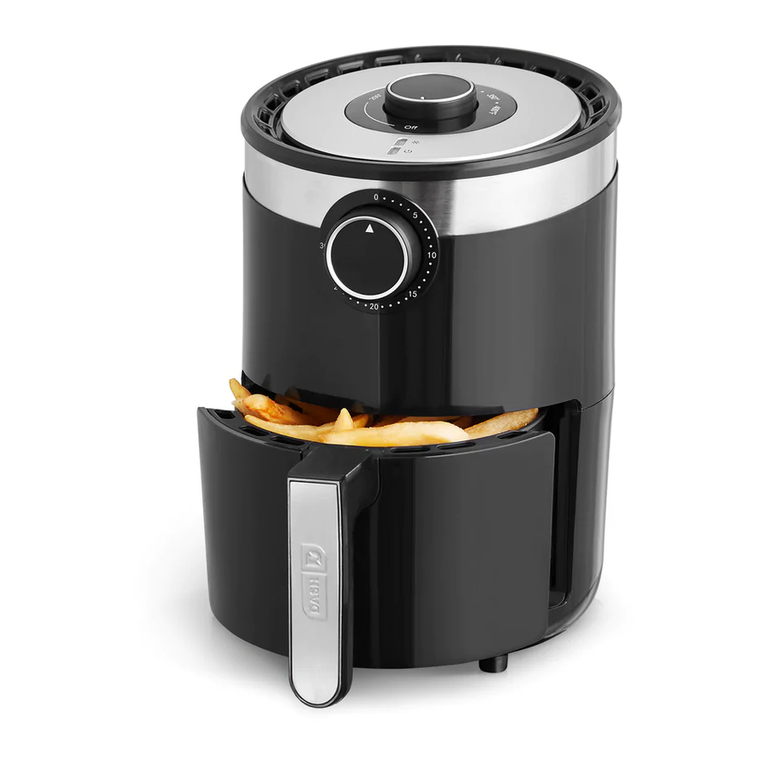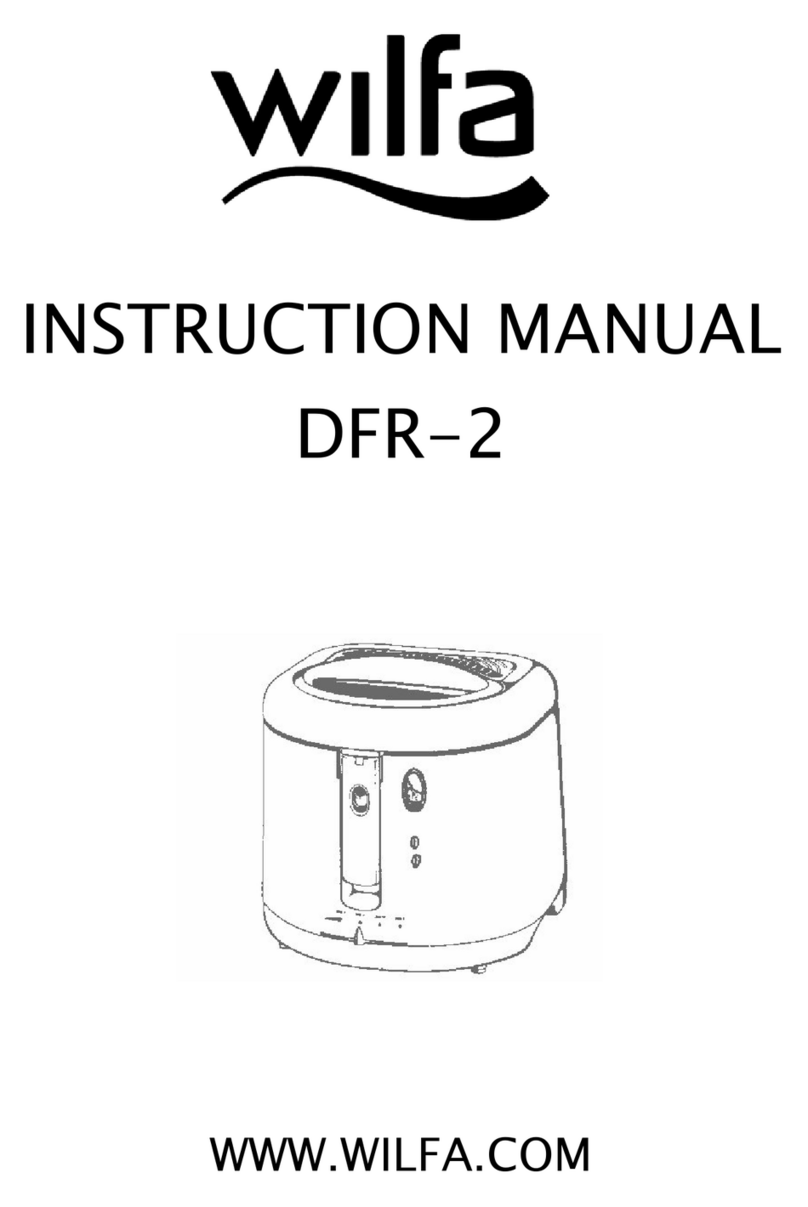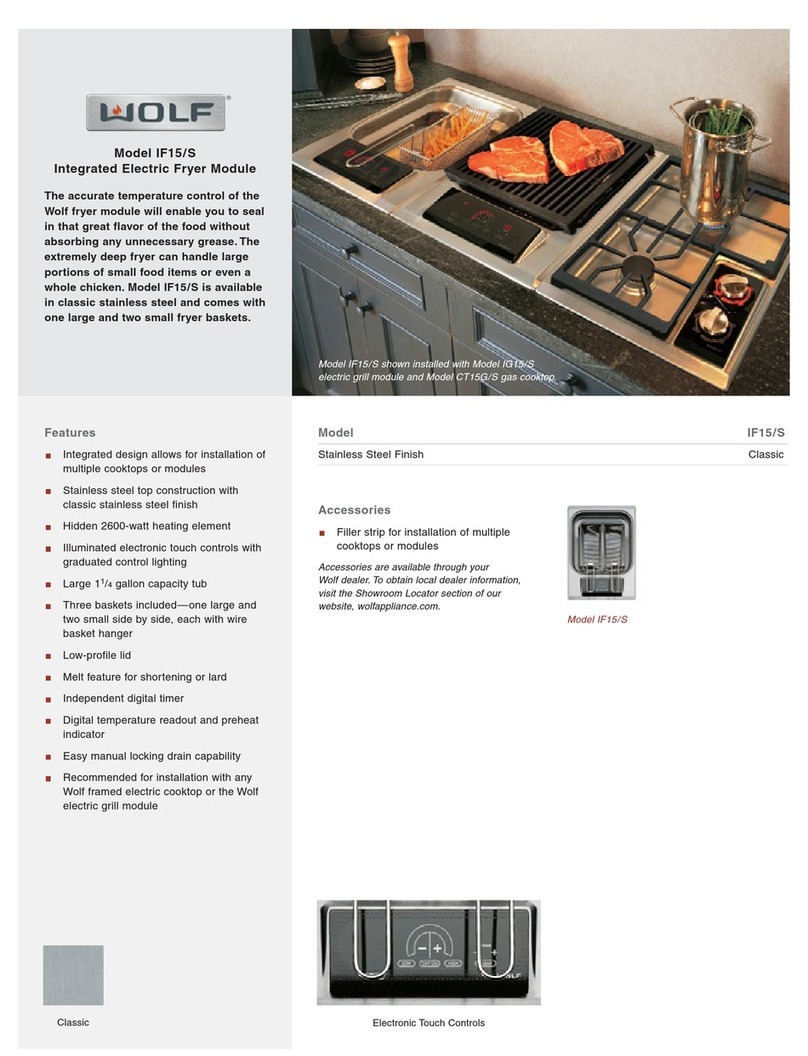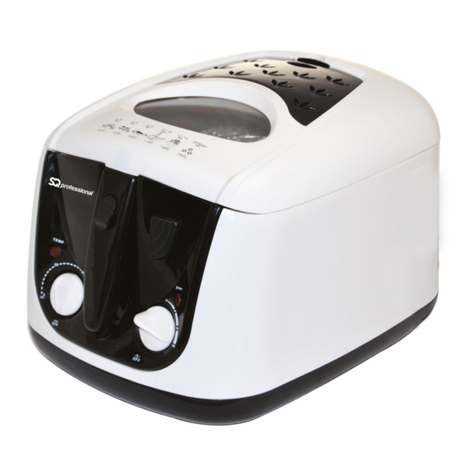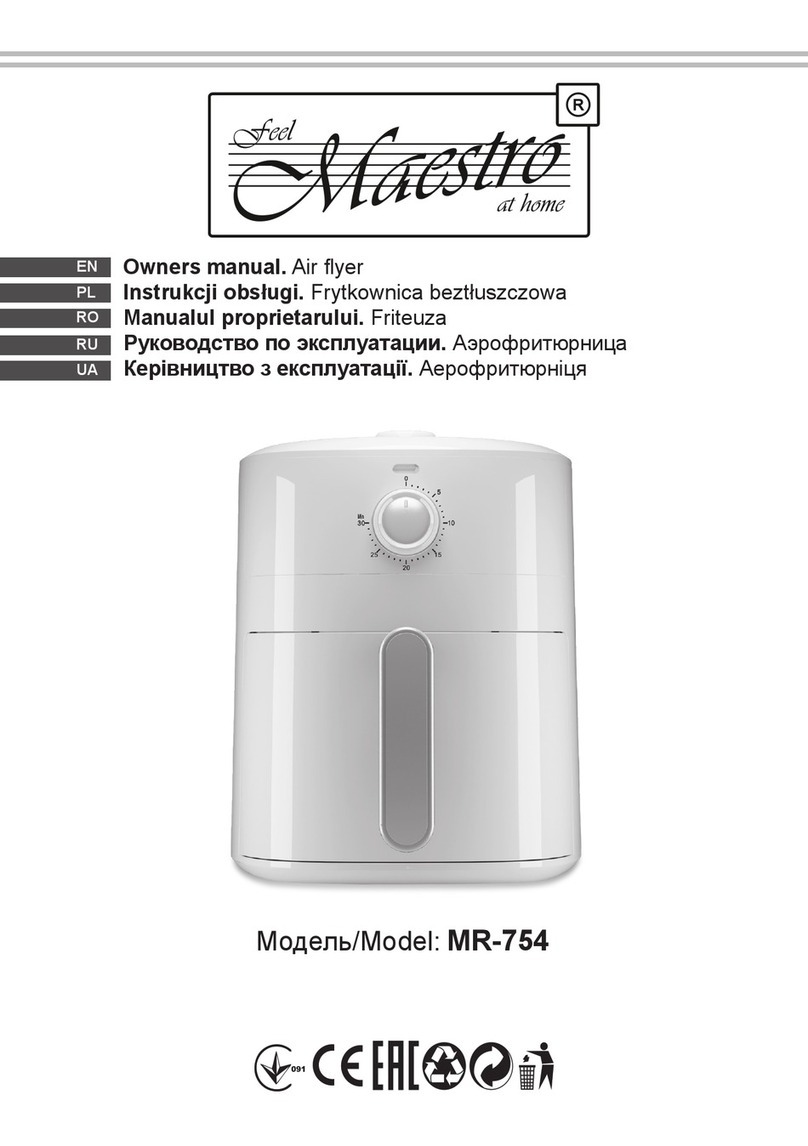16
∙Do not mix different kinds of oil.
∙The quality of over-used oil cannot be
improved by mixing it with fresh oil. The
fresh oil would also be spoilt after a short
while.
∙To prevent the oil from frothing up,
make sure that the food is quite dry.
Take special care to defrost deep-frozen
food thoroughly before frying. Moisture
reduces the life-span of frying oil.
∙For good results, the right temperature
setting is a decisive factor when deep-
frying food. If the oil is not sufficiently
hot, the food may take in too much oil.
It is therefore best to insert the food
basket only once the pre-heating period
is complete. If the oil is too hot, on the
other hand, an outer crust will be built up
while the inner part of the food remains
uncooked.
∙Deep-frozen or chilled food should be
briefly inserted into the hot oil once or
twice before the actual cooking process
begins.
∙Do not fry too much food at once. Each
item should be able to float freely without
touching another.
∙When cooking battered food, make sure
that the batter is firmly attached to the
food and excess flour is removed.
∙Over-used frying oil is easily recognisable
as it is of a darker colour and more
viscous, giving off an unpleasant smell or
tending to foam.
∙Over-used frying oil or oil containing a
residue of particles from earlier use is
more inflammable and tends to ignite
easily. It is therefore best to change the
oil after 3 or 4 cycles of use. However, its
life-span depends mainly on the kind and
quantity of food fried.
∙The life span can be extended if the oil is
filtered after each cycle of use.
∙The oil may be stored inside the deep
fryer if the unit is kept closed and put in a
cool place.
Cleaning and care
∙Before cleaning the appliance, ensure it
is disconnected from the power supply
and has cooled down completely.
∙To avoid any risk of electric shock, do
not clean the appliance with liquids or
immerse it in a liquid.
∙To remove the fat from the container, wait
until it has cooled down sufficiently but
is still liquid. Then pour it into a suitable
heat-resistant container. The fat can be
filtered by pouring it through absorbent
paper placed into a heat-resistant funnel
or in the frying basket itself.
∙Do not pour frying fat down the kitchen
sink. Once cold, it may be disposed of
together with your household refuse.
∙The inside of the frying container can be
cleaned by wiping it first with household
tissue paper and then with a damp,
lint-free cloth, using a mild household
detergent.
∙The lid contains a fat filter which must
be replaced after several frying cycles.
Release the filter cover and take out
the old filter. Replacement filters can be
ordered through Severin Service Centre.
∙Insert a new fat filter and replace the
filter cover.
∙The frying basket and its handle, the fork
rack and forks should be cleaned after




















